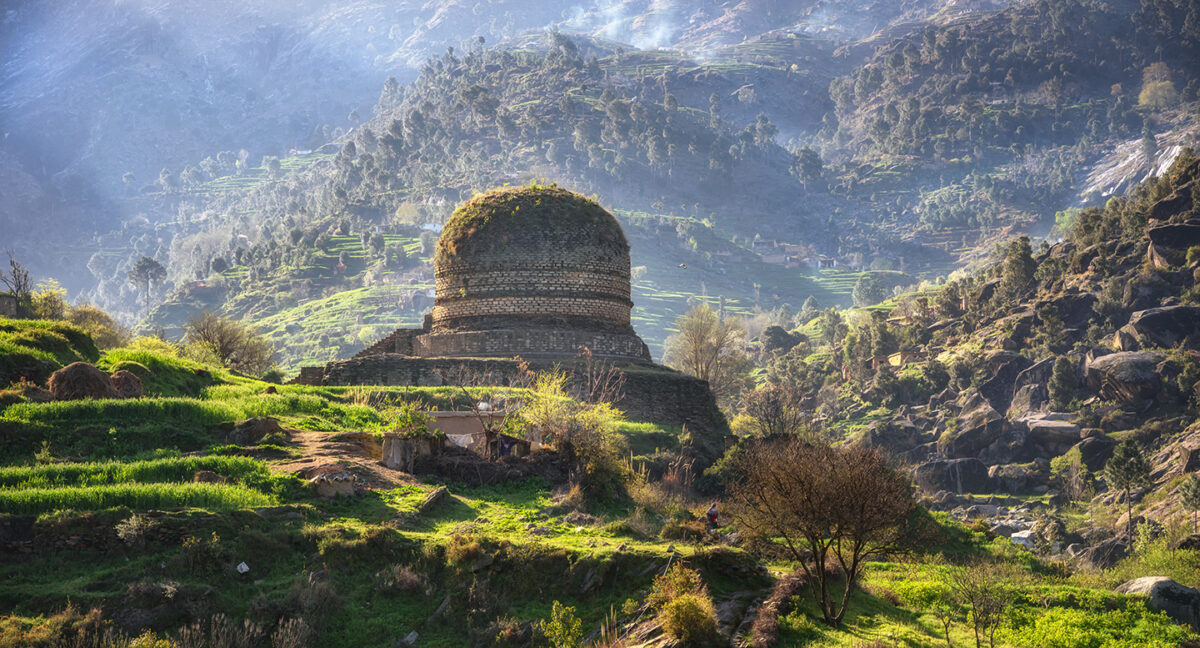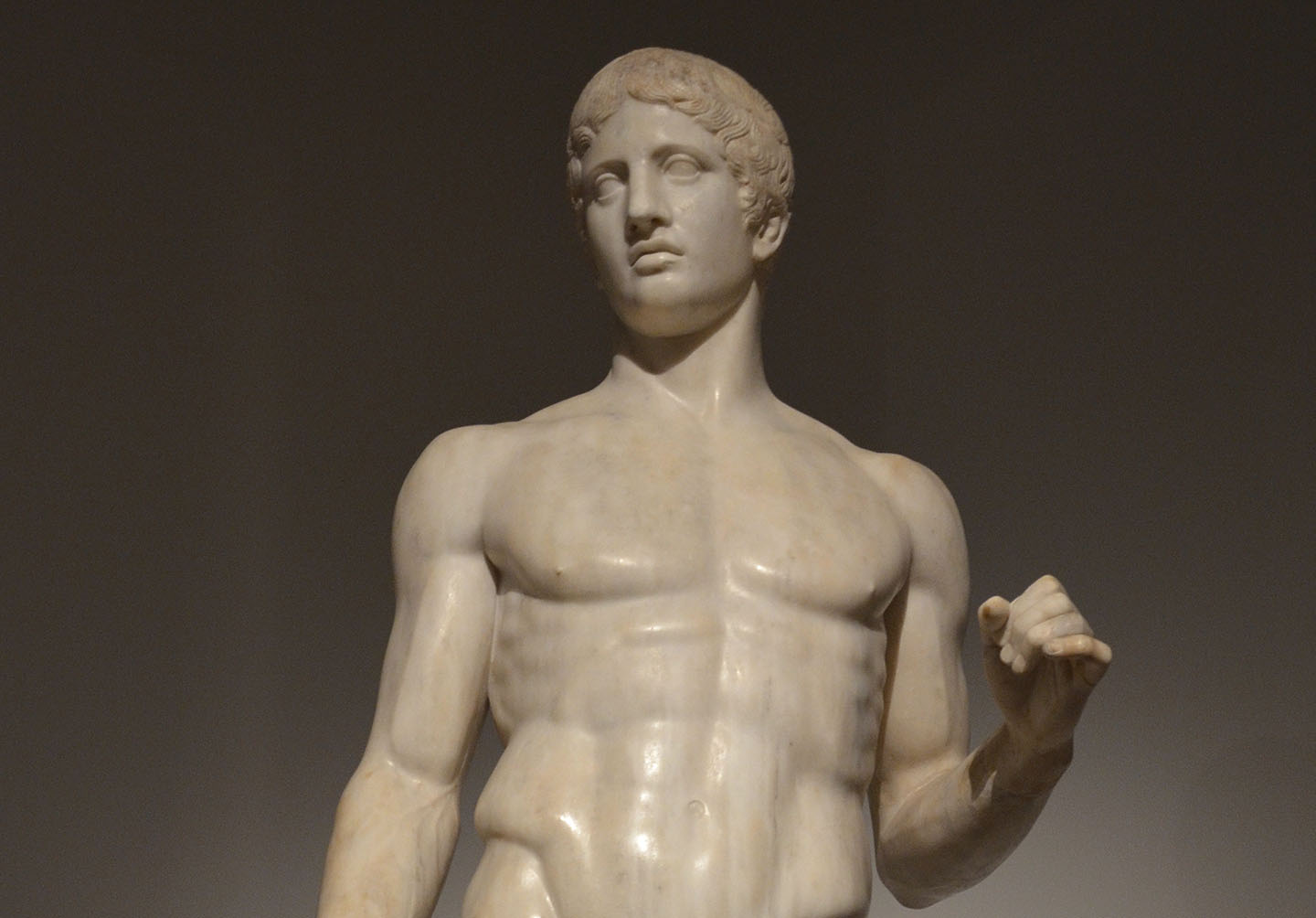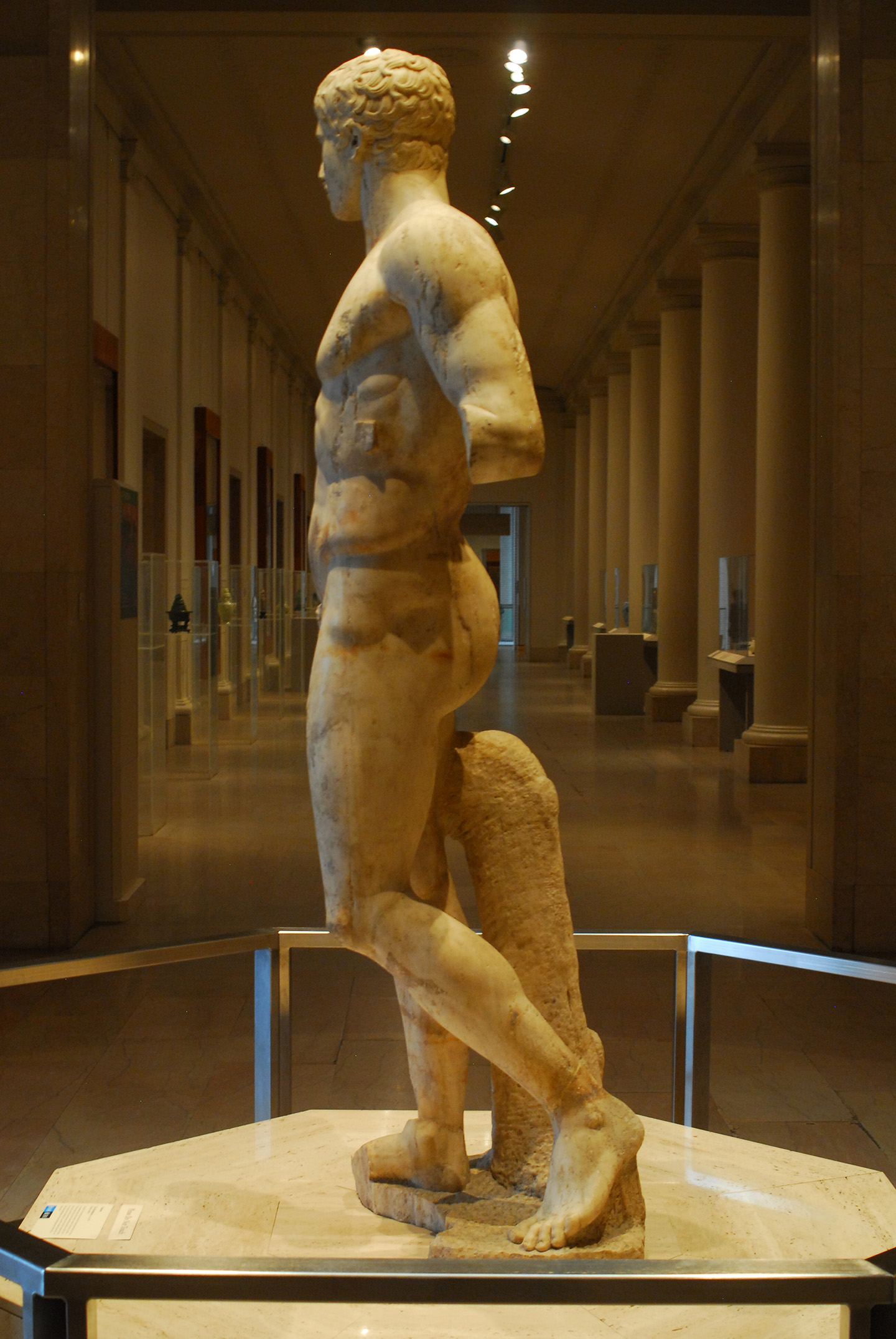


When the ancient devotees of the Buddha Shakyamuni first represented “the enlightened one” in visual form, it was to Greek art that they turned, brought by Alexander the Great to the northwestern corner of the Indian subcontinent. In the region known as Gandhara, a flourishing Buddhist culture adopted the naturalism of Greek sculpture but endowed the figure with a divine pathos that Greece had never seen before.
In an extraordinary example preserved at the Tokyo National Museum, the Buddha stands atop a floral base against a large halo. The stylized drapery undulates like a thin veil, while the contour of his body hides subtly beneath, protruding only at the chest, abdomen and the left knee. It might seem that these figurative techniques are but a derivative form of Greek art, which doesn’t compare with the muscular proportion of an Athenian athlete or the dynamism of a Hellenistic soldier. But for the Gandhara artist, the static and frontal body only served as a foil to the face of the Buddha, which expressed externally the transcendental spirit from within. His features are idealized, his eyes downcast; though devoid of human emotions, he evinces an assured air of peace, compassion, and rectitude that can only be found in an enlightened one, untroubled by his worldly bearing.
When sculpture first reached its maturity in classical Greece (480–323 B.C.), artists had a clear standard for ideal beauty. Influenced by the severe sculptural forms of Egyptian gods and pharaohs, Greek artists brought the art to a new level of naturalism by attending to the subtleties of human anatomy and the figural pose.
Polykleitos, ancient sculptor of the fifth century B.C., established his famous canon of idealized mathematical proportions and balance. This is best represented by his widely-copied Doryphoros or “Spear-bearer”—an warrior who stands completely nude, with each piece of muscle clearly defined but entirely at rest. His hip tilts slightly, relaxing one leg while resting his weight on the other. The S-shaped curvature of his torso creates a classic “contrapposto” stance, which conveys a sense of ease and casualness of the body. His eyes stare blankly into the void, showing a stoic immunity from ignoble human passions.
Such artistic ideal of the classical era transformed, however, when Alexander the Great unified the Greek city-states and brought Greek art all over his transcontinental empire. In this Hellenistic period (323–31 B.C.), action and emotion were frequently depicted, not least in relief sculptures showing battle scenes. On a sarcophagus found in present-day Lebanon, Alexander himself is shown on a rearing horse, caught in the midst of heated combat. His raised arm is prepared to strike down at a Persian soldier whose horse already kneels in exhausted defeat. The pathos of the battlefield across this continuous scene is expressed not only through individual faces of the figures, but also the dramatic twists and turns of their enmeshed bodies.
As a result of Alexander’s expeditions across Europe, Africa, and Asia, Greek art began making a global impact, which was felt as far as northern India. But after his premature death, Alexander’s empire immediately crumbled. Kingdoms in Central Asia and the Middle East soon became independent, though they retained much of the ancient Greek influence including language, script, and coinage. Thus, when Gandhara Buddhists first sought to represent their spiritual teacher in physical form, it was Hellenistic sculpture that proved readily available for adaptation.
The adaption of Greek visual idioms for an alternative kind of spirituality nevertheless demanded a new mode of artistic rendering. Though absorbing the techniques of figuration and drapery, the Gandhara artist moved away from extremes of emotion and dispassion, and sought to express the Buddha’s inner spirit through manifest forms, which exude an unparalleled aura of serenity and rectitude.
That inner spirit captured by the sculptor can only be understood in light of the Buddha’s teaching. A prince who lived in northern India (present-day Nepal) between the mid-sixth and mid-fourth centuries B.C., Shakyamuni was moved by the human sufferings of illness, old age, and death, and determined to forsake all the worldly possessions in search of a state beyond the inevitable cycles. Unwavering in the face of desires and tribulations, he achieved enlightenment through meditation and realized that the vicissitudes of human life resulted from one’s own past deeds. He thus began teaching a path for people to transcend sufferings—that is, by understanding the cycles of reincarnation, eliminating unvirtuous desires, and cultivating one’s righteous behavior and mind.
Having gained a great number of followers, Shakyamuni became known by the Sanskrit title “Buddha” (“The Awakened One”), and the method of spiritual development he taught has come to be called “Buddhism,” which spread along the Silk Road as far as Iran and Japan. Located in the middle of this vast network of culture and commerce, Gandhara flourished under powerful Buddhist emperors and became a major center of religion and commerce for almost six centuries.
Today, the many statues of the Buddha and bodhisattvas produced by this unique civilization remind us of the cultural and artistic diversity of the Hellenistic East, and bear witness to how Buddhist spirituality transformed Greek sculpture into a new kind of divine image—that of great compassion.





